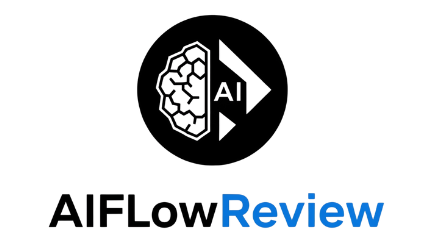Today, AI tools are almost everywhere — and for good reason. From smart text editors to chatbots, these tools promise to save time, boost accuracy, and even offer new ways to be creative. But if you haven’t used one before, jumping in can feel overwhelming. Small prep steps can make all the difference when picking and testing your first AI tool. Let me walk you through what to know before using AI tools — so you head in with clarity and confidence.
Laying the Groundwork: What to Know Before Using Your First AI Tool?
Getting started with AI isn’t just about nabbing the hottest app on the block. You need a clear sense of your goals, a basic understanding of how these tools work, and a watchful eye on your privacy. There’s a wild variety of AI tools out there, so having a little background goes a long way.
Nail Down Your Purpose
Before choosing any AI tool, I like to jot down what I hope to achieve. Am I trying to save time on repetitive tasks? Do I want sharper accuracy, or am I looking for ways to break creative block?
Here are a few reasons people turn to AI tools:
- To automate boring, manual work (like sorting emails)
- For more accurate work (like proofreading)
- To shake loose new ideas (think: brainstorming prompts)
- To analyze data quickly
Start with a single goal. Pick one job you wish were easier, then look for a tool that matches. Being specific helps filter out the noise.
AI Fundamentals for First Timers
AI can spout a lot of complex jargon, but you really just need to get a grip on a few ideas:
- Artificial Intelligence (AI): Programs that mimic smart decision-making.
- Machine Learning: The part of AI that “learns” from data to get better over time.
- Automation: When a tool does tasks for you, no hands-on help needed.
- Chatbots: Text-based helpers, often powered by AI, that answer questions or offer support.
Think of these tools like smart calculators or auto-complete features — but for much bigger, messier problems.
 Photo by Sanket Mishra
Photo by Sanket Mishra
Privacy and Data Protection
Before firing up any shiny app, think about the info you’re sharing. Is it your personal email? Customer addresses? Trade secrets? Some AI tools store or even use your input data to “improve” their models.
Before signing up, always:
- Read the privacy policy (even skimming the main points is better than nothing)
- Look for clear details on how your data is stored or used
- Avoid putting real, sensitive information into a tool you haven’t tested
Privacy matters, whether you’re using a tool for fun or business.
Types of AI Tools and Their Uses
You’ll run across all kinds of AI tools, and each fits a different need. Here are some common ones (with simple examples):
| Type | What It Does | Example Use Case |
|---|---|---|
| Writing assistants | Helps write and fix text | Drafts emails or blog posts |
| Chatbots | Answers questions automatically | Customer support chat on websites |
| Code generators | Writes code snippets for you | Speeds up programming tasks |
| Image & video generators | Creates pictures or videos | Makes social post visuals |
| Voice generators | Turns text into speech | Audiobooks, customer calls |
If you want to compare what’s new and what’s trending, check out curated reviews like 20 Best AI Coding Assistant Tools for an idea of where to look.
Smart Steps for Testing Your First AI Tool
I’ve learned that trying out AI is safest and most productive when you follow a few basic steps. Don’t rush, don’t enter your real data, and manage your expectations. Here’s a workflow I follow when meeting a new tool.
Do a Little Homework First
Don’t just grab the first shiny tool you see in an ad. Spend a few minutes reading online reviews or user guides. Independent blogs, like those sharing detailed guides to AI tool must-haves, offer a level-headed look at both features and flaws.
Check forums, Reddit threads, or trusted tech sites for honest chatter. Knowing both the good and the bad makes it easier to avoid disappointment.
Start Small and Stay Safe
Pick free or demo versions whenever possible. Before you trust an AI tool with important data, test it out with fake or sample content. Pay attention to how the tool processes the data — does it try to send you marketing emails, or ask for permissions that seem fishy?
If you’re unsure about privacy, look for tools with clear policies or opt for ones that run locally on your device.
Patience and Expectations
AI tools can seem magical, but they’re still just tools, not mind readers. They might miss the mark, get confused, or need a learning curve on your end. Give it a couple of tries and tweak your approach — sometimes a different prompt or input gives better results.
If a tool doesn’t work for your case, that’s normal. There are hundreds out there — some shine, some flop.
A few expectations to set:
- Results may be rough at first
- You might need to adjust how you use the tool
- Sometimes, old-school methods still work better
The journey’s about experimenting and learning, not instant perfection.
Wrapping Up: Step In Smart, Step In Strong
Trying out your first AI tool can be both exciting and intimidating. A little prep — figuring out your goal, learning the basics, keeping your data safe, and sampling before you commit — makes the whole process smoother. By understanding what to know before using your first AI tool, you set yourself up for less stress and better results.
If you want to keep exploring, resources like AI Flow Review’s detailed guides and directories can help you find the tool that’s just right for you. Here’s to working smarter and discovering what today’s AI can do in your hands.

















